401. The Arabs had evidently chosen
Bharani (*41.4) as a suitable origo for their list of
main stars, which agrees with what Smyth had suggested:
... It was in the 24th sieu
[connected with β Pegasi] that
the Chinese record a conjunction of the planets Mercury,
Mars, Jupiter, and Saturn, on the 28th of February, 2449
B.C., according to Bailly's computations; but we
sometimes see this statement made as to five planets,
Venus being added, and as having taken place on the 29th
of February, that year being bissextile. Smyth
indefinitely mentions this conjunction as at some point
between α Arietis and the
Pleiades ...
|
Hamal |
110 |
*30.5 |
|
Bharani |
121 |
*41.4 = *27.4 + *14 |
|
Alcyone |
136 |
*56.1 |
| |
Delta |
δ Andromedae |
8.4 |
March 29
(88 = 450 + 3) |
| |
|
η Phoenicis
|
9.4 |
March 30
(89) |
|
- |
Zero |
η Andromedae |
11.4 |
April 1 (91 = 88 + 3) |
| |
Whip |
Cih (γ Cassiopeiai) |
12.4 |
April 2 (92) |
|
Al Sharatain |
Pair of Signs |
β Arietis (Sheratan),
γ (Mesarthim) |
27.4 |
April 17 (107 = 104 + 3) |
| |
Musca Borealis |
35 (Head of the Fly), 39
(Kaffaljidhma), and
41 Arietis (Bharani) |
41.4 |
May 1 (121 = 118 + 3) |
|
Al Dabarān |
Follower |
α Tauri (Aldebaran), θ¹, θ²´,
γ (Hyadum I),
δ (Hyadum II), ε (Ain) |
63.4 |
May 23 (143 = 140 + 3) |
|
Al Hak'ah |
White Spot |
λ Orionis (Heka),
φ¹, φ² |
83.4 |
June 12 (163 = 160 + 3) |
|
... The Heka triplet is where we
otherwise would have expected to see a
bright single star representing Orion's
head (when looking from a location in
the northern hemisphere) ...
λ
and the two stars phi furnish an
easy refutation of the popular error as
to the apparent magnitude of the moon's
disc, Colas writing of this in the
Celestial Handbook of 1892: In
looking at this triangle nobody would
think that the moon could be inserted in
it;
but as the
distance from
λ
to
φ¹
is 27', and the distance from
φ¹
to
φ²
is 33', it is a positive fact; the
moon's mean apparent diameter being 31'
7''. This illusion, prevalent in all
ages, has attracted the attention of
many great men; Ptolemy, Roger Bacon,
Kepler, and others having treated of it.
The lunar disc, seen by the naked eye of
an uninstructed observer, appears, as it
is frequently expressed 'about the size
of a dinner-plate', but should be seen
as only equal to a peppercorn
...
...Al Maisān, the title of
γ
Geminorum, by some error of Firuzabadi
was applied to this star as Meissa
[λ
Orionis}, and is now common for it. Al
Sufi called it Al Tahāyī; but Al
Ferghani and Al Tizini knew it as Rās
al Jauzah, the Head of the Jauzah,
which it marks. The original Arabic
name, Al Hak'ah, a White Spot,
was from the added faint light of the
smaller
φ¹and
φ²
in the background, and has descended to
us as Heka and Hika. These
three stars were another of the
Athāfiyy [tripods used for cooking]
of the Arabs; and everywhere in early
astrology were thought, like all similar
groups, to be of unfortunate influence
in human affairs. They constituted the
Euphratean lunar station
Mas-tab-ba-tur-tur, the Little
Twins, a title also found for
γ
and
η
Geminorum; and individually were
important stars among the Babylonians,
rising to them with the sun at the
summer solstice, and, with
α
and
γ,
were known as Kakkab Sar, the
Constellation of the King
...
The
Egyptian god Heka was a magician
(sorcerer):
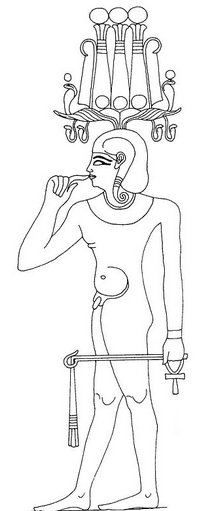 |
41.4 * 26000 / 365.25 = 2947 = 1842 AD +
1105 BC, but possibly the Chinese referred to some place
among the fixed stars which reappeared after 16 days
when out of view because of the powerful rays from the Sun?
However, (41.4 + 16) / 41.4 * 2947 = 4086 = 1842 AD +
2244 BC. Another and more plausible solution is to
count not from 0h but from day 31 + 29 = 60 (the
29th of February, the 'leap' day).
(80 - 59 + 41.4) / 41.4 * 2947 = 4442
= 1842 AD + 2600 BC - a nice number equal to 1 / 10 of
the precessional cycle and also equal to 10 times the
distance from 1582 AD (when Gregory XIII launched his
'crooked canoe') to 1842 AD (my assumed epoch for the
rongorongo texts).
... In astronomy, an epoch
specifies a precise moment in time. The positions of
celestial objects and events, as measured from earth,
change over time, so when measuring or predicting
celestial positions, the epoch to which they pertain
must be specified. A new standard epoch is chosen about
every 50 years ...
Supposing 41.4 represented 1 / 10 of 414
(as in April 14) = 14 * 29½ + 1, the position of this 'place of birth'
(Bharani, *41.4) ought to have been in APRIL 14 (104)
corresponding to May 1 (121 = 80 + 41).
|
ARIES: |
|
1 |
Ashvini |
β
and γ Arietis |
Horse's head |
27 =
16
+ 11 |
|
wife
of the Ashvins |
Sheratan and Mesarthim |
April 17 (107) |
|
2 |
Bharani |
35,
39, and 41 Arietis |
Yoni, the female organ of reproduction |
41 =
27
+ 14 |
|
the
bearer |
Musca Borealis |
May
1 (121) |
|
1-1 (*286) |
*294 |
10-24 (*217 = *581 - 364) |
350 / 2 |
|
JAN 16 (*301) |
NOV 8 (*232 = *596 - 364) |
 |
63 |
231 |
 |
|
Gb6-26 (408) |
294 |
Gb1-3 (229 + 3 = 295 - 9 * 7) |
|
March 21 (0h) |
Jan 11 (*296 =
*232 + *64) |
|
16 * 29½ = 472 = 296 + 175 + 1 = 121 (May 1) +
13 * 27 |
The key number 41.4 could also have been
used by the creator of the Pachamama (Earth
Mother) statue when he arranged her tresses to express
number 396, because 355 (day of the winter solstice) + 41 =
396.
The Moon carried on even after the Sun
had gone down. 414 - 364 = 50 (when Venus could not be
observed before returning in the east).
...
There is a
couple residing in one place named Kui and
Fakataka. After
the couple stay together for a while Fakataka is
pregnant. So they go away because they wish to go to
another place - they go. The canoe goes and goes, the
wind roars, the sea churns, the canoe sinks. Kui
[Tui
= the 3 stars in the Belt of Orion] expires while
Fakataka [Haka-taka
= creating a circuit]swims.
Fakataka
swims and swims, reaching another land. She goes there
and stays on the upraised reef in the freshwater pools
on the reef, and there delivers her child, a boy child.
She gives him the name Taetagaloa. When the baby
is born a golden plover flies over and alights upon the
reef. (Kua fanau
lā te pepe kae lele mai te tuli oi tū mai i te papa).
And so
the woman thus names various parts of the child
beginning with the name 'the plover' (tuli): neck
(tuliulu), elbow (tulilima), knee (tulivae)
...
Orion was a place of creation, with Heka
(the Serpent-charmer, the Magician) marking where a new
king was made (haka-ariki):
|
 |
 |
|
hakaariki |
Gb5-24 |
|
APRIL 1 |
2 |
3 |
4 |
5 |
6 (96) |
7 |
|
... In China, every year about the beginning
of April, certain officials called
Sz'hüen used of old to go about the
country armed with wooden clappers. Their
business was to summon the people and
command them to put out every fire. This was
the beginning of the season called
Han-shih-tsieh, or 'eating of cold
food'. For three days all household fires
remained extinct as a preparation for the
solemn renewal of the fire, which took place
on the fifth or sixth day after the winter
solstice [Sic!] ... |
 |
 |
 |
 |
 |
 |
 |
|
Gb5-23 |
Gb5-24 |
Gb5-25 (378) |
Gb5-26 (150) |
Gb5-27 |
Gb5-28 |
Gb5-29 |
|
HAEDUS II = η Aurigae
(75.9) |
ε Leporis (76.0),
CURSA (Footstool of the Central One) = β Eridani
(76.4),
λ Eridani (76.7)
*76.4 - *41.4 = *35 |
μ Aurigae, μ Leporis (77.6) |
ĸ Leporis (78.0),
RIGEL (Foot) = β Orionis
(78.1),
Flaming Star = IC405
(78.2),
CAPELLA (Mother Goat) = α Aurigae
(78.4), ο Columbae, τ Orionis (78.8)
*78.4 - *41.4 = *37
THUBAN (α
Draconis)
|
λ Aurigae (79.0), λ Leporis (79.6), ρ
Aurigae (79.7)
ARCTURUS (α
Bootis)
|
Shur-narkabti-sha-iltanu-5 (Star in the Bull
towards the north)
σ Aurigae (80.4),
BELLATRIX (Female Warrior) = γ Orionis, SAIF
AL JABBAR (Sword of the Giant) = η Orionis
(80.7),
ELNATH (The Butting One) = β Tauri
(80.9)
*80.4 - *41.4 = *39 |
ψ Orionis (81.1),
NIHAL (Thirst-slaking Camels) = β Leporis
(81.7) |
|
June 4 (*75) |
5 |
6 (157) |
7 |
8 |
9 |
10 (161) |
|
... The month, which takes its name from
Juppiter the oak-god, begins on June 10th
and ends of July 7th. Midway comes St.
John's Day, June 24th, the day on which the
oak-king was sacrificially burned alive. The
Celtic year was divided into two halves with
the second half beginning in July,
apparently after a seven-day wake, or
funeral feast, in the oak-king's honour
... |
|
°May 31 |
°June 1 (*72) |
2 (153) |
3 |
4 |
5 |
6 |
|
'May 8 (128) |
9 (*414) |
10 (*50) |
11 |
12 |
13 |
14 |
|
"April 24 (*399) |
25 (115) |
26 (*36) |
27 |
28 |
29 |
30 |
A new king - a new
year - began in Orion (the Rigel year). 'Cooking tripods'
(athāfiyy) were placed here, one at Heka and
another one below Alnitak (cfr the last king creator in Gb5-24
which has been drawn slightly uplifted, smaller, and
eating - i.e. young and growing). South of the equator, on Easter Island, they
saw Orion upside down and therefore Alnitak (ζ) was a little
higher up.
There were 3 days
'with cold food' before the new king (Sun) could be
born. It was a period of 'need-fire' when everyone
attended, congregated.
...
needfire ceremonies usually take place near the summer
solstice (the Feast of St. John) ... but they occur in
several other seasons as well. The summer date of the
rite and its accompanying festival have to do, among
other things, with fertility, as can can clearly be seen
in a variant from the valley of the Moselle preserved
for us by Jakob Grimm. Each household in the village was
constrained to contribute a shock of straw to the nearby
high place, Stromberg, where the males went at evening
while the females went to a spring lower down on the
slope. A huge wheel was wrapped with this straw. An axle
run through the wheel served as the handles for those
who were to guide it on its downward plunge. The mayor
of a nearby town kindled the straw, for which office he
was rewarded with a basketful of cherries. All the men
kindled torches and some followed the burning orb as it
was released downhill to shouts of joy. The women at the
spring echoed these shouts as the wheel rushed by them.
Often the fire went out of its own accord before it
reached the river, but should the waters of the river
extinguish it, an abundant vintage was forecast for that
year ...
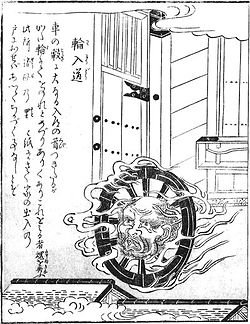
.jpg)
|


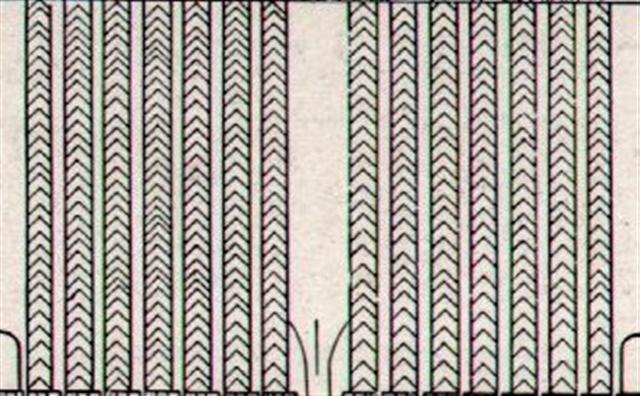



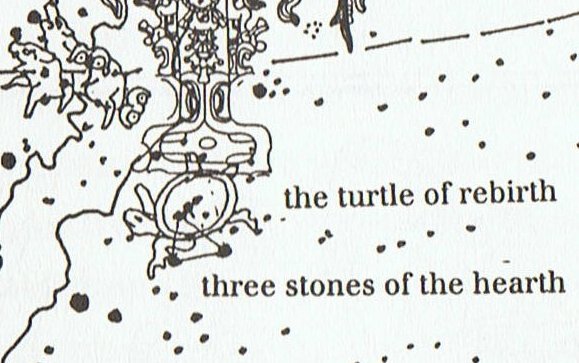
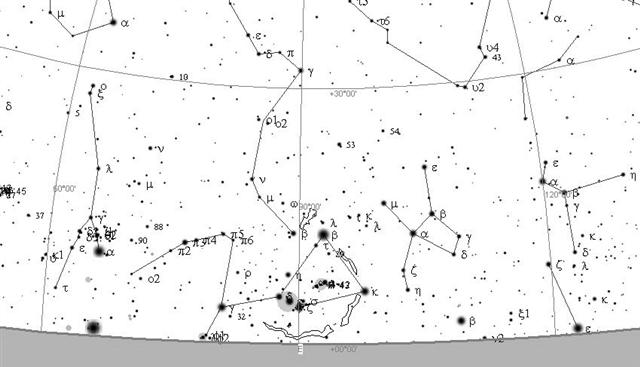

.jpg)